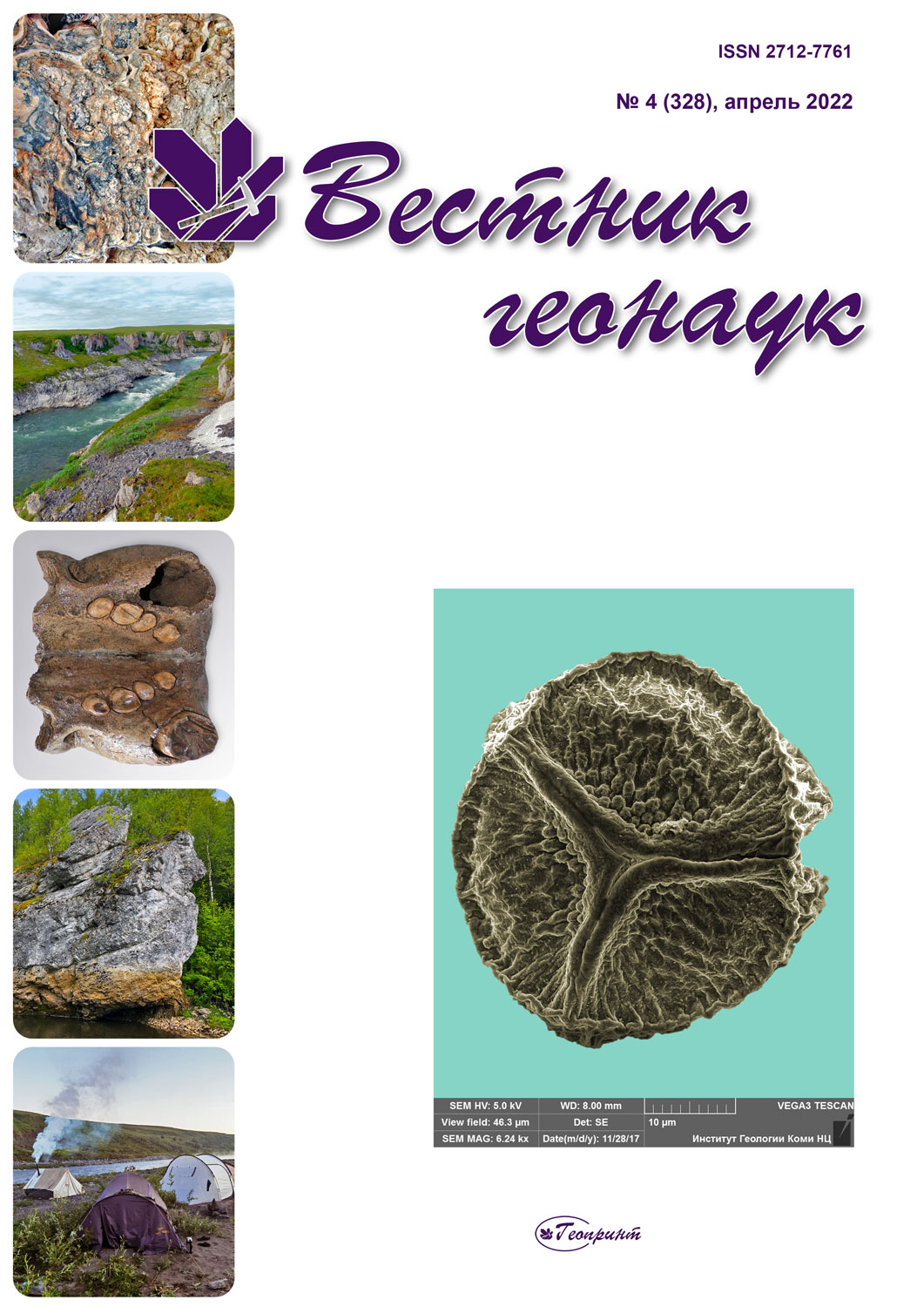|
Title page
|
1
|
|
Content
|
2
|
| |
|
|
Scientific articles
|
|
|
Bone remains of mammals from the Paleolithic site Ushbulak
(North-Eastern Kazakhstan): archaeological context, mineralogical
and geochemical properties and paleoecological reconstructions
V. I. Silaev, A. A. Anoykin, G. D. Pavlenok, A. F. Khazov,
V. N. Filippov, D. V. Kiseleva, S. N. Shanina,
B. A. Makeev, K. K. Urazova
DOI: 10.19110/geov.2022.4.1
Comprehensive mineralogical and geochemical studies of fossil bones of herbivorous mammals were carried out at the unique Paleolithic site Ushbulak (North-East Kazakhstan), dating from 45 to less than 10 thousand years ago. The geological conditions of the occurrence of fossil bones and the lithological and mineralogical properties of bone-bearing soils are described. The microstructure of bones, the composition of impurities illuviated in them, epigenetic minerals, the composition of microelements, the crystallochemical properties of bioapatite, thermal properties, and the elemental and amino acid composition of bone collagen were analyzed. Regularities of changes in the properties of fossil bones in the process of their fossilization are revealed. The isotopic composition of C, O in bioapatite, C, N in bone collagen was studied, and paleoclimatic and paleoecological reconstructions were carried out.
Keywords: Paleolithic, Ushbulak site, fossil bones, mineralogical and geochemical properties, paleoclimatic and paleoecological reconstructions.
 Download full text Download full text
|
3—37
|
Bronze casting of the Vychegda Permians
(based on the materials of the Lower-Vychegda Chezhtyyag burial ground)
I. S. Astakhova, E. A. Savelyeva
DOI: 10.19110/geov.2022.4.2
The paper deals with the burials of the excavation No. 7 of the Lower-Vychegda Chezhtyyag burial ground of the Vym culture of the Vychegda Perm, in which objects indicating the occupation of the population by bronze casting were found. The analytical studies were based on using optical and scanning electron microscopes. Based on the analysis of the grave goods, the belonging of these burials to women is substantiated. The conducted geochemical analysis of scrap metal found in the burials is represented by tin bronzes with lead separations, metallurgical copper, tin and silver-copper alloy. Metallurgical copper, lead-copper, zinc bronze, and tin bronze were used to manufacture adornments and household items. Convincing evidence of local bronze casting was obtained. Tin bronzes, lead and copper were produced mainly locally. Among the non-ferrous metal products, both products of local craftsmen and imported ones are presented. The similarity of the composition of non-ferrous metal and scrap metal products confirms the assumption that the burials in question belong to female casters, whose main field of activity was bronze casting.
Keywords: the epoch of the Middle Ages, Vym culture, Vychegda Perm, bronze casting, women-casters, Chezhtyyag burial ground, Lower-Vychegda, archeometallurgy, alloys.
 Download full text Download full text
|
38—50
|
The Geolex Biogeosorbent:
practical application of technologies
T. N. Shchemelinina, E. M. Anchugova, O. B. Kotova
DOI: 10.19110/geov.2022.4.3
The oil and gas industry plays a key role in the Russian economy. However, its risks of environmental impact are among the highest in modern production industries. The need for the fastest recovery of territories requires a prompt elimination of consequences of soil pollution with oil. This might be achieved by an extensive complex of technologies, including biotechnological product application. This study examined contaminated soils from experimental industrial sites of the Komi Republic, Yamal-Nenets Autonomous District, Khanty-Mansiysk Autonomous District. Practices accelerating the processes of soil restoration included the application of the Geolex biogeosorbent composed of a glauconite-bearing rock and immobilized oil-degraders of the BIOTRIN biopreparation. The biotechnologies embodied enhanced the processes of dehydrogenation and oxidation of oil and petroleum products. By the end of the experiment, the dehydrogenase activity of the soils recultivated decreased, which indicated the progressive succession. The efficiency of pollutant removal at pilot sites was 68—95 % in 60 days.
Keywords: soil pollution, oil, petroleum products, biogeosorbent, pilot tests, soil cleanup.
 Download full text Download full text
|
51—56
|
B. I. Guslitser’s contribution to the study of Quaternary geology
and Paleolithic of the European North-East
L. N. Andreicheva, P. Yu. Pavlov
DOI: 10.19110/geov.2022.4.4
The article is devoted to the 100th anniversary of the Candidate of Geographical Sciences Boris Isaakovich Guslitser, Head of the Laboratory of geomorphology and Quaternary geology at the Institute of Geology of the Komi Branch of the USSR Academy of Sciences. He was widely known both in our country and abroad as the largest specialist and outstanding researcher of the Quaternary geology of the European North-East of Russia. The area of his scientific interests was very extensive: karstology, geomorphology, stratigraphy, paleogeography, paleontology of Quaternary deposits, archeology.
Keywords: karst, caves, geomorphology, Quaternary deposits, stratigraphy, paleogeography, small mammals, archeology, paleolithic.
 Download full text Download full text
|
57—64
|
| |
|













